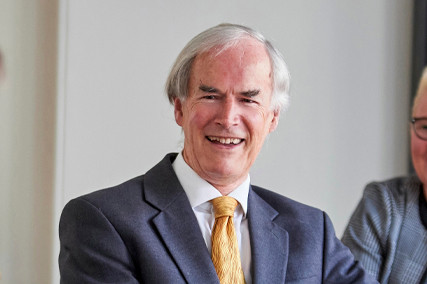In a much anticipated judgment which brings to an end years of litigation concerning the future of a nursery and community building unlawfully erected in the disused, but consecrated, burial ground of Christ Church, Spitalfields, the Court of Arches has ordered that a restoration order be made with the effect that the nursery is to be demolished by February 2029.
At first instance, acting deputy chancellor of the diocese of London (Chancellor June Rodgers) held that the Consistory Court had the necessary powers in respect of both a confirmatory faculty and restoration order; and that in this case, it was appropriate to grant a confirmatory faculty and refuse to make a restoration order. It was also held that Spitalfields Open Space Limited did not have sufficient interest to seek a restoration order and to oppose the grant of a confirmatory faculty ([4]).
On appeal, the Court of Arches grappled with five issues arising from the first-instance judgment ([5]):
a) whether the deputy was wrong in respect of the insufficient interest of Spitalfields Open Space Limited;
b) whether she was wrong to hold that there was power to make a confirmatory faculty;
c) if not, should her finding be changed as a result of Mr Ouvry’s application to intervene?
d) if there is no power to grant a confirmatory faculty, should a restoration order now be made;
e) if so, on what terms should it be made?
With respect to the issue of standing, the Court of Arches held that Spitalfields Open Space Limited did have sufficient interest to seek a restoration order and to oppose the grant of a confirmatory faculty. The court took the opportunity to review the issue of standing in the faculty jurisdiction in light of the approach taken to the standing of public interest groups in secular courts and held that when considering the issue of standing there is “no reason to insist on some form of proprietary interest, nor need consistory courts be instinctively hostile to public interest groups, including those recently incorporated.” ([48] – [51]).
On the second issue — the power to grant a confirmatory faculty — the Court of Arches held that there was no power to grant a confirmatory faculty in the circumstances; it was “erroneous” for the Acting Deputy Chancellor to have concluded that s. 18A of The Care of Church and Ecclesiastical Jurisdiction Measure 1991 provided such a power ([56] – [60]). The court concluded that s. 18A refers “solely to the future erection of a building and is not expressed to authorise the retention of a pre-existing building” ([61]).
Thirdly, in respect of Mr Ouvry’s application to intervene, the court accepted that it was “not strictly necessary” to reach a conclusion on the interpretation of s. 18A(2)(b) in light of its conclusion on the second issue that there was no power to grant a confirmatory faculty; nevertheless, the court addressed the matter and held that if there had of been a power to grant a confirmatory faculty, then that power would not have been ousted by the application of s. 18A(2)(b) based on a narrow reading of interments within that sub-section ([62] - [81]).
Turning to the fourth issue — whether a restoration order should be made — the Court of Arches took into account the conduct of the respondents, the conduct of the appellants, factors against demolition, open space considerations, the setting of the church and further consents in coming to the conclusion that a restoration order should be granted ([86] – [117]). The court concluded that “albeit with some regret, a restoration order should be made despite the cost and disruption this will necessarily involve” ([117]).
Finally, the court went on to consider on what terms the restoration should be made. Taking into account the need to allow time for the occupants of the nursery to relocate and the undertakings given by the Rector and Church Wardens and by the Governors of the school, and by the London Borough of Hamlets with respect to landscaping and public access, the court concluded that the restoration order must be complied with before 1 February 2029 or earlier if the present use ceases before then ([118] - [140]). The court noted that by this point, “the nursery will have functioned for 13 years, so that the public money spent will not have been entirely wasted, even though there will inevitably be substantial costs in dismantling the building and clearing the site” ([139]).
Robert McCracken KC leading Thomas Seymour of Wilberforce Chambers acted for the Appellants and the Intervener, instructed by Richard Buxton. (Annabel Graham Paul advised the appellants on the planning and historic environment aspects of the case and assisted with the drafting of the skeleton argument).
Morag Ellis KC and Caroline Daly acted for the Respondents. Conor Fegan (Pupil Barrister at Francis Taylor Building) assisted in the research and preparation of a note on the issue of standing.
Press coverage on the case:
https://www.thetimes.co.uk/article/graveyard-nursery-loses-fight-for-life-qzl56r0mm




 Back to News
Back to News




